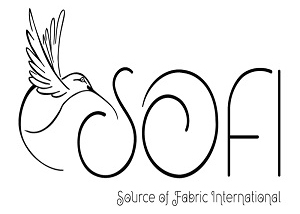When it comes to versatile fabrics, nylon and spandex stand out for their unique properties and widespread use. These materials have revolutionized the fashion and athletic industries, offering comfort, durability, and stretch. Whether you’re slipping into a pair of leggings or donning a sleek swimsuit, understanding these fabrics can enhance your wardrobe choices.
Nylon, known for its strength and resistance to wear and tear, is a go-to for everything from outdoor gear to everyday clothing. On the other hand, spandex brings unmatched elasticity to the table, allowing garments to hug your body and move with you. Together, they create a winning combination that meets the demands of active lifestyles while ensuring style and comfort. Dive into the world of nylon and spandex to discover how they can elevate your clothing experience.
Understanding Nylon and Spandex Fabric
Nylon and spandex fabric offer unique features that make them popular choices for various clothing options. These synthetic materials excel in comfort, fit, and performance.
What Is Nylon?
Nylon is a synthetic fabric created through a chemical process that turns petrochemicals into fibers. Introduced in the 1930s, nylon became a significant player in textiles. This fabric is known for its strength and durability. It resists wear and tear, making it perfect for everyday clothing and outdoor gear. You often see nylon in items like jackets, backpacks, and swimwear. Nylon is lightweight, which enhances comfort in active wear. Additionally, nylon dries quickly, making it suitable for moisture-prone activities. Many appreciate nylon for its ability to wick away sweat, helping users stay dry during workouts.
What Is Spandex?
Spandex, also known as elastane, is a highly elastic synthetic fiber. Invented in the late 1950s, spandex is famous for its exceptional stretchability. This material can stretch up to five times its original length while returning to its normal shape. Spandex often blends with other fabrics to improve fit and comfort. You find spandex in form-fitting clothes like leggings, athletic wear, and swimsuits. Its lightweight nature adds to its appeal, ensuring comfort without bulk. Spandex also offers excellent shape retention, allowing garments to maintain their form after multiple wears. This property makes spandex valuable for anyone needing flexibility in their wardrobe.
Characteristics of Nylon and Spandex Fabric
Nylon and spandex fabrics share several important characteristics that make them ideal for many uses. Both fabrics excel in durability, allowing them to withstand the rigors of daily wear and outdoor activities. Additionally, their lightweight qualities contribute to overall comfort in several clothing styles.
Nylon has a smooth texture and offers a lustrous finish, enhancing the visual appeal of garments. Meanwhile, spandex provides outstanding flexibility, ensuring clothing molds to the body shape. Both fabrics resist wrinkles, making them low-maintenance options. Furthermore, they dry quickly, a significant advantage for active wear.
Using these materials together often results in flattering, functional clothing choices. The combination of strength, stretch, and comfort makes nylon and spandex an excellent choice for those active lifestyles.
Uses of Nylon and Spandex Fabric
Nylon and spandex are essential materials in various industries due to their unique properties. The versatility of these fabrics makes them suitable for an array of applications.
Clothing Applications
Nylon and spandex are widely used in clothing due to their flexibility and comfort. Nylon provides durability, making it ideal for items such as jackets, activewear, and swimwear. Its quick-drying feature enhances comfort during physical activities. Spandex, with its exceptional stretch, combines seamlessly with other fabrics, offering a snug fit in leggings, sports bras, and dancewear. Blending nylon with spandex results in garments that move with your body. Activewear brands often use this combination to ensure freedom of movement and support during workouts.
You will find these fabrics in everyday items like undergarments and athletic apparel due to their breathability and moisture-wicking properties. The combination of both fabrics caters to demands for both style and function. This versatility extends to fashion items as well, like fitted dresses and form-hugging tops, allowing for trendy yet practical clothing choices that appeal to various consumer preferences.
Home Decor Uses
Nylon and spandex are also suitable for home decor applications. Nylon’s strong fibers and resistance to wear make it a popular choice for upholstery and curtains. Synthetic carpets often use nylon for its durability and ability to withstand heavy foot traffic without losing shape. Spandex finds its application in more niche decor items, such as fitted table covers and stretchable slipcovers, which enhance the aesthetic appeal of furniture.
Using spandex allows for easy maintenance, as these items feature machine washable properties. The elasticity ensures a snug fit on various surfaces, giving a polished look. Furthermore, nylon’s ability to resist moisture makes it a suitable choice for various household items, including shower curtains and outdoor furnishings. By using these materials, you can create a stylish yet functional living space that withstands everyday wear and tear.
Industrial Applications
In industrial settings, nylon and spandex play significant roles due to their strength and flexibility. Nylon is commonly found in manufacturing applications for products like ropes, nets, and conveyor belts. Its high tensile strength contributes to the reliability of these tools in various environments.
Spandex is used in niche industrial applications such as elastic bands and medical supplies, including compression garments that aid in recovery and support. The stretchability of spandex provides comfort and functionality in products that require fitting and support. Together, nylon and spandex contribute to the production of durable and reliable products that meet industry standards. These materials enhance performance in settings ranging from manufacturing to medical, proving their versatility and importance in numerous fields.
How to Care for Nylon and Spandex Fabric
Caring for nylon and spandex fabric ensures longevity and maintains appearance. Follow these guidelines for washing, drying, and ironing.
Washing Instructions
Washing nylon and spandex fabric requires a gentle approach. Use cold water for washing to prevent damage. Add a mild detergent specifically designed for synthetic fibers. Avoid using bleach or fabric softeners as they can break down the fibers. Hand washing is preferable, but if using a washing machine, select a delicate cycle.
After washing, avoid wringing out the fabric. Instead, gently press out excess water. If items are heavily soiled, pre-soak them for up to 30 minutes in a diluted detergent solution. Always wash similar colors together to prevent bleeding. For most items, air drying is more effective than machine washing.
Drying Methods
Drying nylon and spandex fabric needs careful handling. Air drying is the best method. To air dry, lay the fabric flat on a clean surface away from direct sunlight, as high temperatures can cause fading or deterioration. If you choose to use a dryer, select the lowest heat setting and remove items while slightly damp to eradicate heat damage.
Avoid hanging garments by their shoulders, as this may cause stretching. Instead, use a laundry rack to maintain the original shape. Do not leave items in the dryer for an extended time, as prolonged exposure to heat can lead to shrinkage.
Ironing Tips
Ironing nylon and spandex fabric requires caution to avoid damage. Set the iron to the lowest heat setting or on the synthetic textiles option. Place a thin cloth or towel between the iron and fabric to prevent direct contact. If spots of wrinkles persist, use steam by gently hovering the iron above the fabric without touching it.
Avoid pressing seams directly, as this may impact the elasticity of spandex. When possible, iron items while they are slightly damp. Storing ironed garments in a way that avoids creasing helps maintain their smooth appearance.
How to Sew with Nylon and Spandex Fabric
Sewing with nylon and spandex fabric requires specific techniques and materials to achieve the best results. Follow these guidelines to ensure a successful sewing project.
Necessary Materials
You need the right materials to work with nylon and spandex effectively. Gather the following items:
- Fabric: Choose a blend of nylon and spandex for optimum stretch and durability.
- Thread: Use polyester thread to match the strength and elasticity of the fabric.
- Interfacing: Light-weight or fusible interfacing provides extra support for areas that require structure, like necklines or waistbands.
- Pattern: Select a sewing pattern designed for stretch fabrics to achieve a proper fit. Look for patterns labeled with terms like “stretch” or “knit.”
Having the correct materials facilitates proper sewing techniques and results in a polished final product.
Tools You Will Need
Specific tools enhance the sewing process with nylon and spandex. Gather the following tools:
- Sewing Machine: A sewing machine with a zigzag or stretch stitch option performs best for elasticity.
- Ballpoint Needles: These needles prevent snags and runs in knitted fabrics. Use a size 70/10 or 80/12 for best results.
- Cutting Tools: Fabric scissors or rotary cutters help cut the fabric efficiently, avoiding frayed edges.
- Pins and Clips: Use clips rather than pins for thick layers of fabric to avoid damaging the material.
- Iron: An iron with a steam function helps press seams while using a low heat setting.
Utilizing the right tools ensures precision and comfort throughout the sewing process.
Step-by-Step Sewing Process
Follow these steps to sew effectively with nylon and spandex:
- Prewash Fabric: Prewash the fabric to remove any chemicals from manufacturing. This process prevents shrinkage after sewing.
- Cut Fabric: Lay the fabric flat and cut out the pattern pieces. Use rotary cutters for larger sections.
- Pin or Clip Pieces: Attach fabric pieces together with clips. Place clips along the edges and avoid pinning to maintain the fabric’s stretch.
- Sew with a Stretch Stitch: Start sewing using the stretch stitch option. Guide the fabric gently while sewing, allowing for elasticity.
- Finish Seams: Use a serger or zigzag stitch to finish raw edges. This method prevents fraying and adds durability.
- Press Seams: Iron the seams with a low heat setting, avoiding direct contact with the fabric. Utilize a pressing cloth if necessary.
Completing these steps enables a successful sewing project with nylon and spandex, resulting in quality garment construction.
Troubleshooting Common Issues
Dealing with Stretching
Stretching can occur in nylon and spandex garments, especially in areas subjected to constant movement. To address this issue, focus on maintaining the fabric structure. Select the appropriate washing technique. Always wash in cold water with mild detergent. Avoid high heat during drying. Opt for air drying or a low heat setting for the dryer. Store garments properly. Hang them instead of folding to prevent further stretching. Consider using a fabric stabilizer when sewing. This technique helps maintain the original fit. If a garment stretches out after use, gently steam it to help reshape.
Fixing Snags and Tears
Snags and tears can result from rough surfaces or wear and tear. To fix these issues, identify the damage first. For small snags, you can often pull them back into place. Use a needle and thread for larger tears. Match the thread to the fabric color. Sew with a simple stitch to secure the edges. For heavier damage, consider patching the tear with a coordinating fabric piece. Apply fabric glue for quick fixes. Always use a small amount to avoid creating lumps. Keep the area clean and dry during repairs. Ensure that any repair is well-pressed to avoid future catches and wear.
Preventing Fabric Pilling
Pilling occurs from friction and can diminish the appearance of nylon and spandex. To prevent this, wash garments inside out. This reduces the friction that causes pilling. Use a gentle cycle in the washing machine. Avoid harsh detergents and fabric softeners that can contribute to the problem. Opt for air drying or low heat in the dryer. High temperatures can weaken fibers and lead to pilling. Regularly use a fabric shaver. This tool removes pills without damaging the fabric. Store garments carefully. Keep them away from rough surfaces which can cause friction and pilling during storage.
Alternative Methods for Using Nylon and Spandex Fabric
Explore innovative ways to use nylon and spandex fabrics beyond traditional apparel. These methods enhance creativity and sustainability in crafting and home projects.
Upcycling Techniques
Transform old garments made from nylon and spandex into new, functional items. Upcycling involves repurposing these fabrics to minimize waste. Here are popular techniques for upcycling:
- Turn Leggings into Headbands: Cut old leggings into strips, sew or knot them together, and create stylish headbands. These retain their stretch, offering a secure fit for workouts.
- Make Shopping Bags: Utilize the fabric from worn-out jackets or sportswear to create reusable shopping bags. Sew pieces together to form a sturdy design that withstands regular use.
- Create Pouches and Zipper Bags: Cut smaller sections and add zippers to make pouches or bags for storing essentials. This idea maximizes the use of fabric scraps and reduces clutter.
- Use for Patchwork Projects: Mix remnants from various nylon and spandex pieces to craft patchwork quilts, cushions, or wall hangings. This gives a unique touch to home decor.
- Repurpose into Gym Accessories: Transform old athletic wear into water bottle holders or gym straps. DIY projects keep your workout gear organized while promoting sustainability.
Each technique empowers you to repurpose materials, reduce waste, and contribute positively to the environment.
Mixing with Other Fabrics
Combine nylon and spandex with other fabrics to create versatile and functional textiles. Mixing enhances durability and stretch while also improving comfort. Here are some popular fabric combinations:
- Cotton with Spandex: Blend cotton with spandex for added stretch. This combination yields comfortable T-shirts and casual wear ideal for everyday activities.
- Nylon with Mesh: Pair nylon with mesh to create breathable activewear. This mix is perfect for joggers, enabling airflow during intense workouts.
- Spandex with Polyester: Combine spandex with polyester for durable activewear that dries quickly. This combination works well in swimwear and sports apparel.
- Denim with Spandex: Mix denim with spandex for jeans that offer stretch and comfort. This pairing ensures mobility without compromising style.
- Wool with Nylon: Blend wool with nylon for winter wear that retains warmth while minimizing bulk. This mix works effectively in jackets and active outdoor clothing.
These combinations enhance the qualities of nylon and spandex, resulting in unique clothing options that cater to specific needs and occasions.
Conclusion
Nylon and spandex are more than just fabrics; they’re essential components of modern fashion and functionality. Their unique properties cater to your active lifestyle while providing style and comfort. You can enjoy versatile clothing options that enhance your wardrobe and support your daily activities.
By understanding how to care for these materials and exploring creative applications, you can maximize their potential. Whether you’re sewing your own creations or repurposing old items, the possibilities are endless. Embrace the benefits of nylon and spandex and elevate your clothing choices today.
Frequently Asked Questions
What are nylon and spandex commonly used for?
Nylon and spandex are widely used in the fashion and athletic industries. Nylon’s durability and quick-drying properties make it ideal for outdoor gear and everyday clothing, while spandex is known for its elasticity, making it perfect for form-fitting clothes like leggings and athletic wear.
How do you care for nylon and spandex fabrics?
To care for nylon and spandex, wash in cold water with a mild detergent, and avoid bleach and fabric softeners. Hand washing or a delicate machine cycle is recommended. Air dry if possible, and if using a dryer, choose the lowest heat setting. Iron on low heat with a cloth barrier.
Can nylon and spandex be used in home decor?
Yes, nylon and spandex are used in home decor as well. Nylon is often used for upholstery and curtains due to its durability, while spandex is popular for fitted table covers and slipcovers, providing both style and functionality.
What sewing tools are needed for working with nylon and spandex?
When sewing with nylon and spandex, use a sewing machine with a stretch stitch option, ballpoint needles, and polyester thread. Additionally, lightweight interfacing and clips instead of pins can help to avoid damaging the fabric during construction.
How can you troubleshoot issues with nylon and spandex garments?
Common issues like stretching, snags, and pilling can be addressed with proper washing techniques and storage. Reinforce the fabric structure, fix damages promptly, and store garments in a cool, dry place to maintain their quality and appearance.
What are some creative ways to use leftover nylon and spandex?
Leftover nylon and spandex can be upcycled into various items such as headbands, shopping bags, or pouches. Mixing these fabrics with cotton or mesh can also create unique clothing options that enhance durability and comfort while promoting sustainability.


